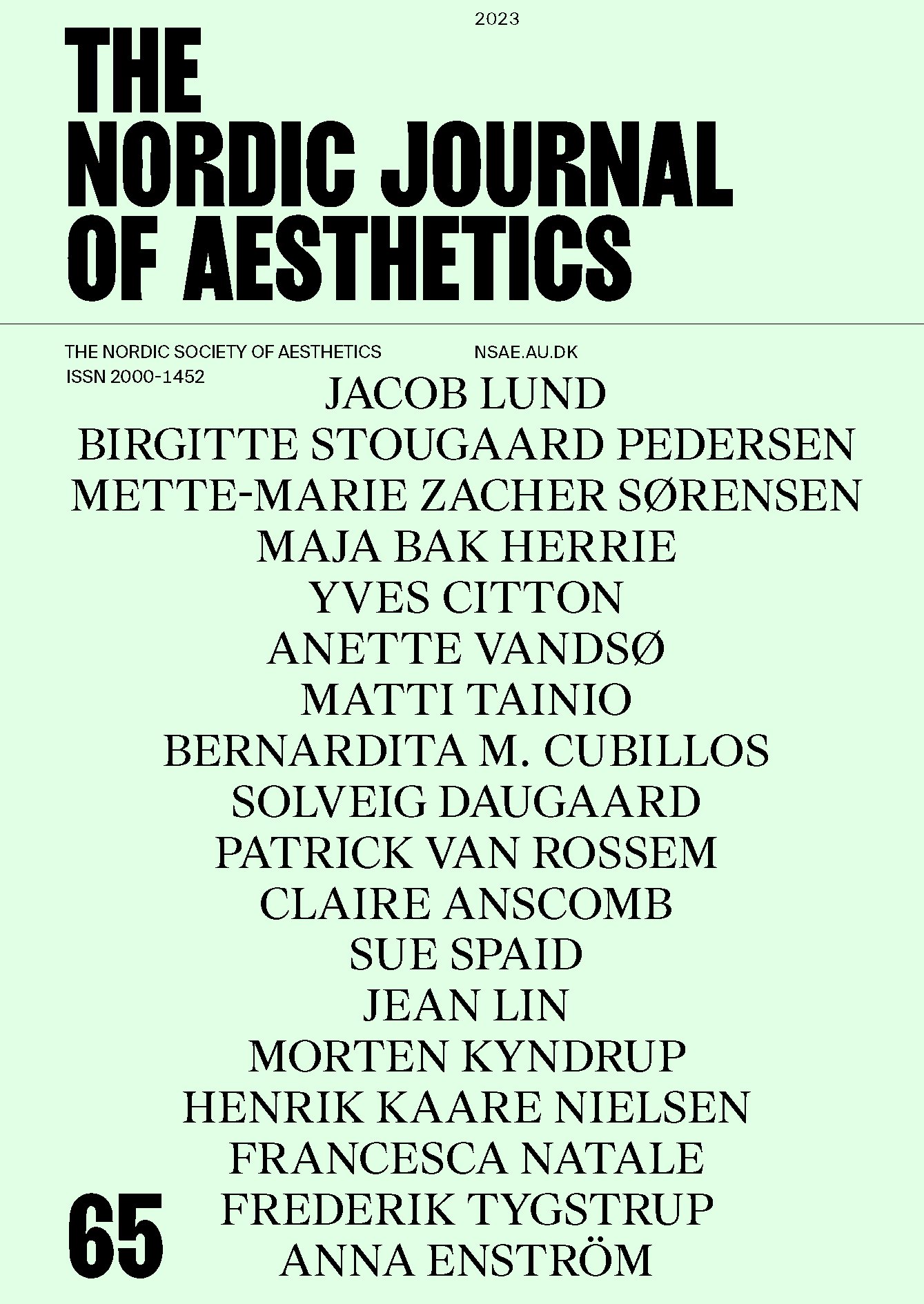Keeping the War Outside the Frame: Ellipsis as a Means of Redirection Toward Women's Perspectives in Two War Narratives
DOI:
https://doi.org/10.7146/nja.v32i65-66.140105Keywords:
Ellipsis, Cinema, Attention, Women's Social Roles, Violence, ResistanceAbstract
This article explores how cinema’s material discontinuity can stimulate the attention of a distracted audience and prompt reflection
on historical violence. By examining Yasujiro Ozu’s Sanma no aji (1962) and Greta Gerwig’s Little Women (2019), it argues that ellipsis is a powerful technique used to construct an argument about the relationship between war and women’s social roles. Specifically, the article analyses how these films use the ellipsis to enhance the resistance of women who act against the official thread of History. Finally, the findings highlight the potential of cinema to challenge dominant narratives and encourage alternative approaches to representing violence and social roles.
References
Jacques Aumont, La imagen (Barcelona: Paidós, 1992).
Walter Benjamin, The Work of Art in the Age of Its Technological Reproducibility, and Other Writings on Media (Cambridge: The Belknap Press of Harvard University, 2008).
David Bordwell, Ozu and the Poetics of Cinema (Princeton: Princeton University Press, 1988), https://doi.org/10.2307/1211232.
Mauricio Castro, “Vanished Men, Complex Women. Gender, Remembrance and Reform in Ozu’s Postwar Films,” in Ozu International, edited by Wayne Stein and Marc Di Paolo (New York-London: Bloomsbury, 2016), https://doi.org/10.5040/9781501304743.ch-003.
Jean-Louis Déotte, La época de los aparatos (Buenos Aires: Adriana Hidalgo, 2013).
Harun Farocki, Desconfiar de las imágenes (Buenos Aires: Caja Negra, 2013).
Pierre Francastel, “Espace et Illusion,” Revue Internationale de Filmologie 2, no. 5 (1949).
Marcel Martin, El lenguaje del cine (Barcelona: Gedisa, 2002).
David Oubiña, Una juguetería filosófica. cine, cronofotografía y arte digital (Buenos Aires: Manantial, 2013).
Donald Richie, “The Later Films of Yasujiro Ozu,” Film Quarterly, 13, no 1, (1959)
Donald Richie, “Yasujiro Ozu: The Syntax of His Films.” Film Quarterly, 17, no. 2 (1963–1964), https://doi.org/10.1525/fq.1963.17.2.04a00040.
Judy Simons, “The Afterlives of Louisa May Alcott: Greta Gerwig’s Little Women,” Adaptation: The Journal of Literature on Screen Studies, 13, no. 2, (2020). https://doi.org/10.1093/adaptation/apaa014.
David C. Stahl and Mark B. Williams, “Introduction,” in Imag(in)ing the War in Japan. Representing and Responding to Trauma in Postwar
Literature and Film, edited by David C. Stahl and Mark N. Williams (Leiden-Boston: Brill, 2010).
Downloads
Published
How to Cite
Issue
Section
License
Copyright (c) 2023 Bernardita M. Cubillos

This work is licensed under a Creative Commons Attribution 4.0 International License.
Authors who publish with this journal agree to the following terms:
- Authors retain copyright and grant the journal right of first publication with the work simultaneously licensed under a Creative Commons Attribution License that allows others to share the work with an acknowledgement of the work's authorship and initial publication in this journal.
- Authors are able to enter into separate, additional contractual arrangements for the non-exclusive distribution of the journal's published version of the work (e.g., post it to an institutional repository or publish it in a book), with an acknowledgement of its initial publication in this journal.
- Authors are permitted and encouraged to post their work online (e.g., in institutional repositories or on their website) prior to and during the submission process, as it can lead to productive exchanges, as well as earlier and greater citation of published work (See The Effect of Open Access).




